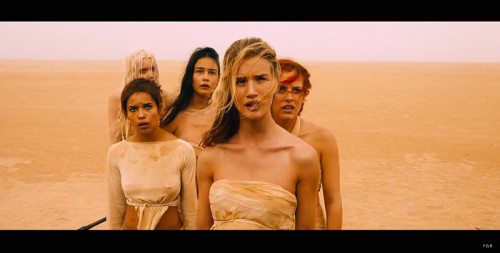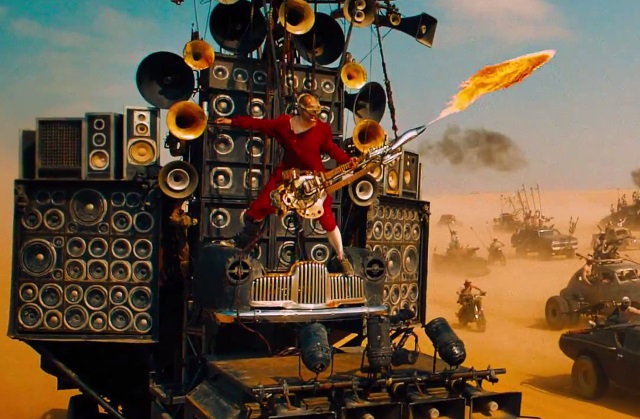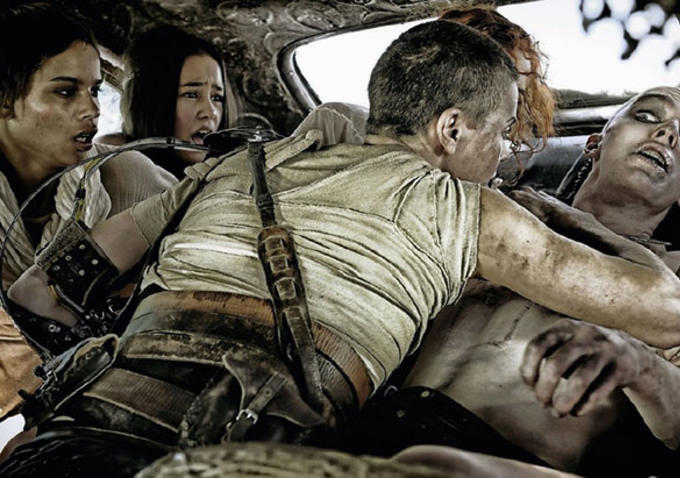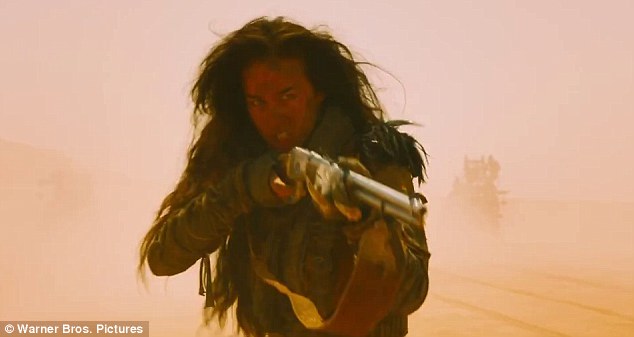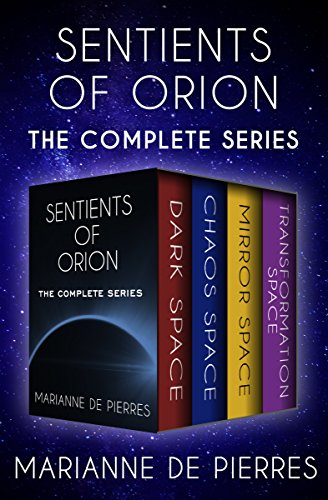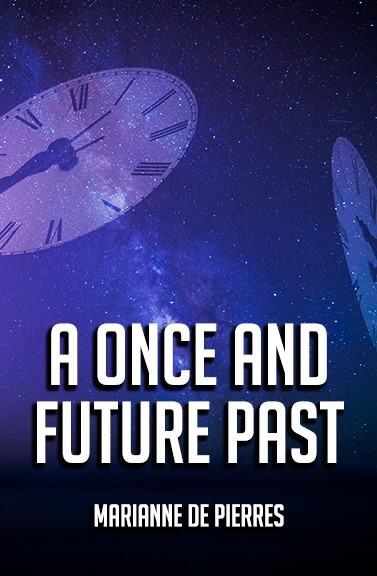
Alayna Cole
Alayna Cole is an MCA (Creative Writing) candidate who loves to write stories when she’s not studying.
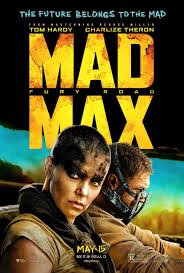 It’s hard to believe a movie that is essentially a two hour car chase could be so complex, but Mad Max: Fury Road is riddled with interesting storytelling choices that will change the way I view action movies from this point onwards.
It’s hard to believe a movie that is essentially a two hour car chase could be so complex, but Mad Max: Fury Road is riddled with interesting storytelling choices that will change the way I view action movies from this point onwards.
For anybody who spends as much time online as I do, it was impossible to avoid seeing the controversy surrounding the release of Fury Road. One article described the movie as ‘Trojan horse feminism’, hiding messages empowering women behind cars, guns, and explosions to sneak them into cinemas. But I don’t think George Miller and the stellar cast of Fury Road are trying to be secretive at all.
Now might be a good time to remind the internet about the definition of feminism: the advocacy of women’s rights on the grounds of equality. Fury Road isn’t trying to kick men out of action movies, but rather to show that women are just as capable of surviving the apocalypse, car chases, gun fights, dust storms, hand-to-hand combat, and mortal wounds as men are. A woman can be more than the ‘prize’ waiting for the action hero at the end of the movie; a woman can be the action hero.
However, in achieving this, Fury Road doesn’t try to strip women of their womanhood. Though the protagonist, Furiosa, has to hide her femininity by shaving her head to achieve Imperator status and to be granted the autonomy to travel into the wasteland in her War Rig, her character still possesses many of the traits commonly associated with women. This includes her more emotional responses to their ‘hopeless’ journey, which contrast with Max Rockatansky’s archetypically stoic persona.
Though this is a ‘Mad Max’ movie, Max’s character is constructed to act as a framing narrative rather than a protagonist. His eyes are a lens through which Imperator Furiosa’s story can be viewed. Furiosa, played by Charlize Theron, starts a war when she offers five young women a new life. These women, biologically unharmed by the radiation of the wasteland, had been locked away as the ‘wives’ of the Immortan Joe—the leader of the corrupt Citadel—and were being used as breeding stock. The movie follows Furiosa’s attempt to fulfil the hopes of these girls while seeking her own redemption.
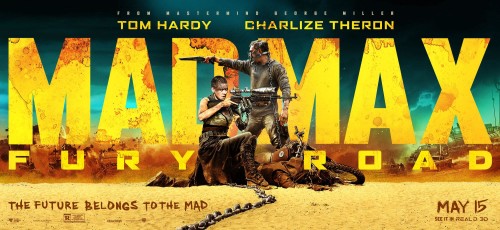
Though Furiosa is fierce, she is also realistically limited. When fighting hand-to-hand with Max, she is outmatched due to her lighter build and missing hand. Still, she finds a way to use makeshift weapons and moments of opportunity to hold her own, protecting herself with agility and resilience. Though how she lost her hand remains unexplained, some have theorised that this ‘imperfection’ is what prevented Immortan Joe keeping Furiosa as a ‘breeder’, while Theron has explained this by revealing that she imagined Furiosa to be infertile. Theron’s deep characterisation of Furiosa went beyond the narrative and this contributed to the protagonist having so much depth to her portrayal.
Immortan Joe’s five ‘wives’ are also portrayed with limitations, proving that for a movie to be ‘feminist’, it does not need to depict all women as being capable of literally everything. While the Splendid Angharad, Toast the Knowing, Capable, the Dag, and Cheedo the Fragile are connected by their shared experiences as ‘wives’ and their lack of fighting skills, each has a distinct personality and talents. Though they contribute little to the close-quarters combat, Toast the Knowing helps by reloading a gun, Capable keeps watch at the rear of the War Rig, Cheedo gives Furiosa a boost so she can jump onto a different vehicle, and the Splendid Angharad puts her pregnant body between Furiosa and Immortan Joe to protect her. All five young women snap sassy comments at Max when he threatens them, chase the rig down, make repairs to the machine, and help push it free when it is bogged in the mud.
Although they are being saved from imprisonment at the Citadel, their varied capabilities ensure the ‘wives’ are never treated like damsels in distress. The abuse they suffered and their vulnerability are never shown, with the movie focusing on their strength and their journey to salvation. Similarly, the lack of sexualisation in Fury Road makes this movie conspicuously different to many action movies. The only women treated as objects in this film are the ‘wives’, who are not sexualised by Immortan Joe and his cronies, but rather treated as prize possessions for their perfect physicality because it makes them ideal for helping to continue his bloodline. The concept of giving women power and not treating them as objects is an important theme in Fury Road, with the line ‘we are not things’ spoken by women in two different scenes.
Contributing to this theme, moments that could have been explicitly sexual are downplayed. When Max first rounds the War Rig and sees Furiosa and the five ‘wives’ washing themselves beneath a high-pressure hose, it’s obvious that he thinks they’re attractive and perhaps a mirage; however, he doesn’t comment on their appearance, instead prioritising drinking the water in order to survive, and he quickly treats the women as equals when a fight breaks out. The common theme of women being seen as sexual objects is also referenced when the Valkyrie is seen naked and calling for help at the top of an old oil tower part way through the movie. In this scene, she makes the choice to use her body as a weapon to tempt passers-by; however, no comment is made about her appearance either, with Max simply suggesting ‘it’s a trap.’
The movie doesn’t revolve around a romantic subplot; all that is ever shared between Max and Furiosa in the end is a respectful nod (and a little blood). The closest thing to a romance in the movie belongs to Nux and Capable, and it is based on mutual compassion more than physical expression, with them never sharing one of the war-halting, firework-encouraging kisses that are common in the genre.
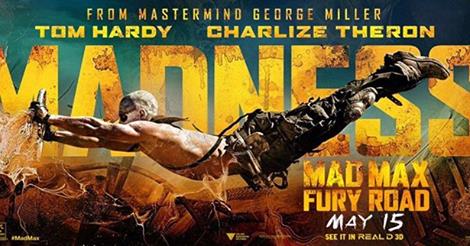
Power is also granted to women in this movie through choices around voice and silences. We know Max’s name as he reveals it while framing Fury Road with a monologue, but he doesn’t reveal his name—nor does he say much of anything—to the other characters until the end of the movie. This means most of the conversation that happens in the War Rig belongs to the women, and giving them voice adds to their agency. Max’s refusal to tell Furiosa his name presents a beautiful opportunity for her to shout ‘Fool!’ when she needs him to start driving the War Rig, turning what could have sounded like a cry for help—‘Max!’—into another opportunity for Furiosa to demonstrate her sass. If we needed more convincing that Furiosa is the star of Fury Road, it’s her name that’s chanted at the end of the movie, not Max’s.
But Max still gets his action-hero glory. He gets to prove he’s tough as he climbs along the moving War Rig, fights warboys and clan leaders, powers through some nasty injuries, and refuses to look at epic explosions. But the movie isn’t all about Max’s toughness, made clear when one of his fights is held off screen and he returns to the War Rig with a bloodied face and parts for the machine. It’s these little choices that make Fury Road exceptional. It’s obvious that everything included and excluded from the movie was done so with great purpose, including visual choices like the all-blue evening light streaming onto Max and Furiosa in the front of the War Rig while the five ‘wives’ sit huddled around a lamp, warmed by innocent white.
Choices surrounding some of the more serious moments of Fury Road, and the movie’s ending, were just as purposeful and incredibly impactful. This is where the real spoilers begin, so if you haven’t seen this movie yet, now would be a good time to stop reading (and run immediately to the cinema).
Conditioned by action movies where the good guys don’t die, I was shocked when I was first reminded of the characters’ mortality with the death of the Splendid Angharad. We were lulled into a sense of security with her near-miss, and with the question of whether she truly went beneath the wheels of the next vehicle, but there was to be no relief—even her baby failed to survive. Before the Splendid Angharad fell from the War Rig, the only people flung to their death were the faceless warboys, who the audience wasn’t positioned to feel any sympathy for; however, after this loss, there is a complete tonal shift.
Where there had been an enjoyable, wild car chase, there were now incredible stakes, and whenever a character found themselves in a life-threatening situation after this moment, there was a question surrounding their survival.
And other good guys did die. Members of the Vuvalini—the all-female clan into which Furiosa was born, before being stolen as a child—are killed on their way back to the Citadel as they fight Immortan Joe’s army and his allies. Though characters die in the middle of battles, the fight doesn’t cease; still, although these deaths are not lingered on for long, somebody still notices and cares about each one, and this gives every death weight and significance.
Giving significance to death is a common thread throughout the movie. It’s established early that the warboys are obsessed with the idea of dying heroic deaths so they can reach Valhalla. This is something Nux—the warboy that ends up accompanying joining the team on the War Rig—attempts on multiple occasions, trying to die gloriously in his mission of returning the ‘wives’ to Immortan Joe. At first he is convinced his failures are an indicator that he is being saved for something greater, but soon he believes that he is simply incapable of being a hero. If Fury Road teaches us anything, however, it’s that everyone can be a hero, and Nux finally—sadly—finds his moment, tipping the War Rig over and blowing up the passage to protect Max, Furiosa, the ‘wives’, and the remaining Vuvalini from the vehicles in pursuit of them.
It’s not just Nux’s death that bears this cyclical nature; Fury Road is full of wonderful ideas and motifs that come full circle. Max finally revealing his name towards the end of the movie, voluntarily becoming the ‘blood bag’ he was originally forced to be so that he can stop Furiosa from bleeding out, and the gesture of his insanity—holding his hand to his forehead—repeated throughout the movie and finally saving his life, are all examples of these cycles. The journey itself—out to the ‘green place’ and back to the Citadel—is its own cycle, reflecting the life cycle that Furiosa, the ‘wives’, and the Vuvalini desperately wish to rejuvenate, also symbolised by the box of seeds that the Dag protects after its original owner dies. Throughout the movie, Nux frequently says, ‘I live, I die, I live again’ and this connects to more than just his own belief system; it describes the entire wasteland that was once a prosperous world and its potential to become one again.
The entire narrative is cyclical, with Furiosa and the ‘wives’ returning to the Citadel and Max returning to his nomadic life. The ending is atypical—there is no rosy ‘happily ever after’, as it’s obvious that there’s still a long fight ahead of Furiosa and the other women, but there is also no frustrating cliffhanger setting the story up for another movie. Fury Road finishes as Mad Max—the frame that sits around this narrative—leaves, because he doesn’t know what happens next, and we are left to feel hopeful for Furiosa’s success, even if hope often leads to insanity.








